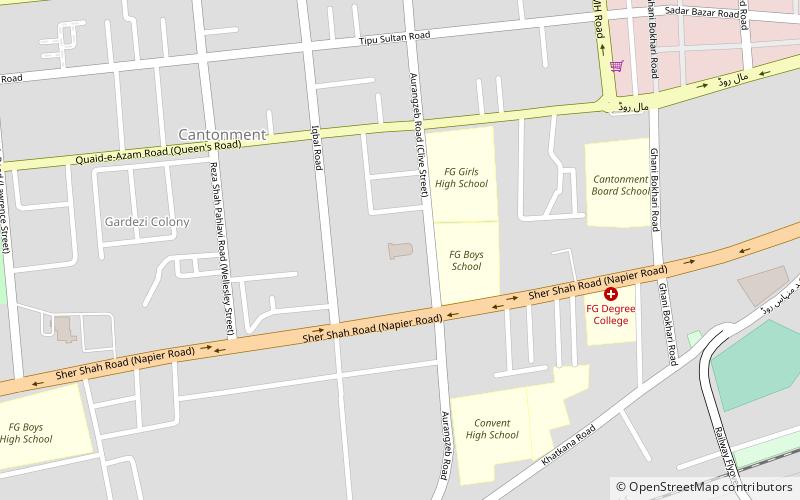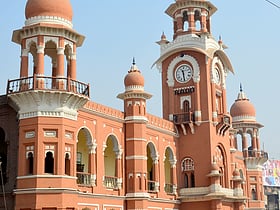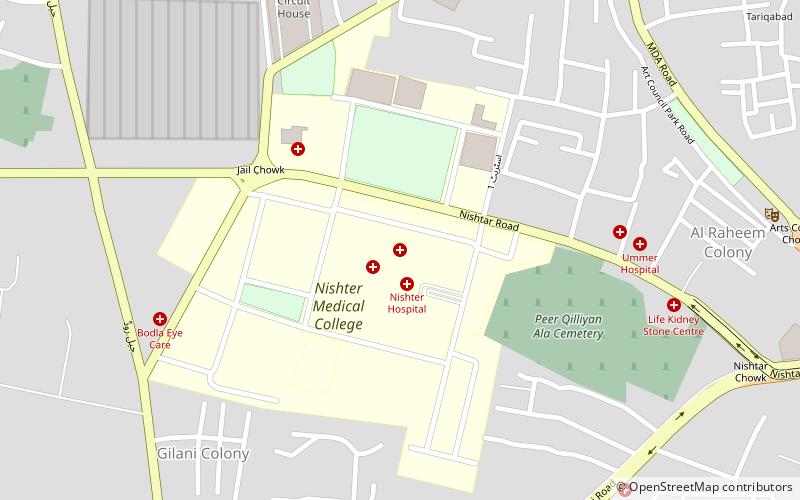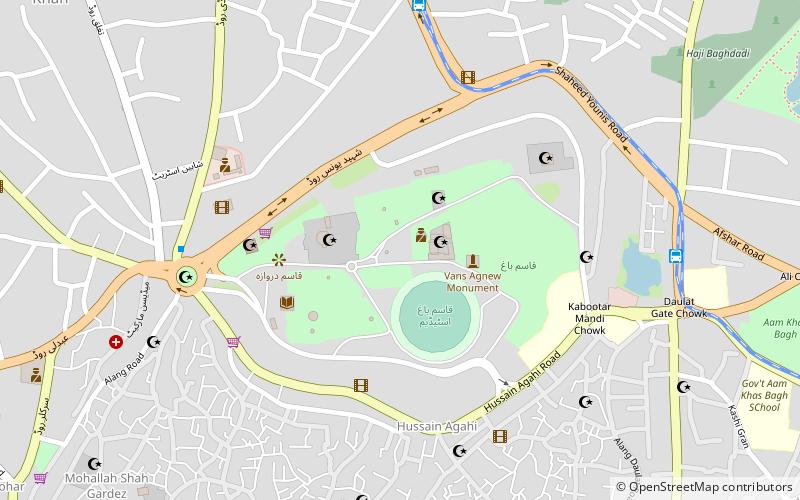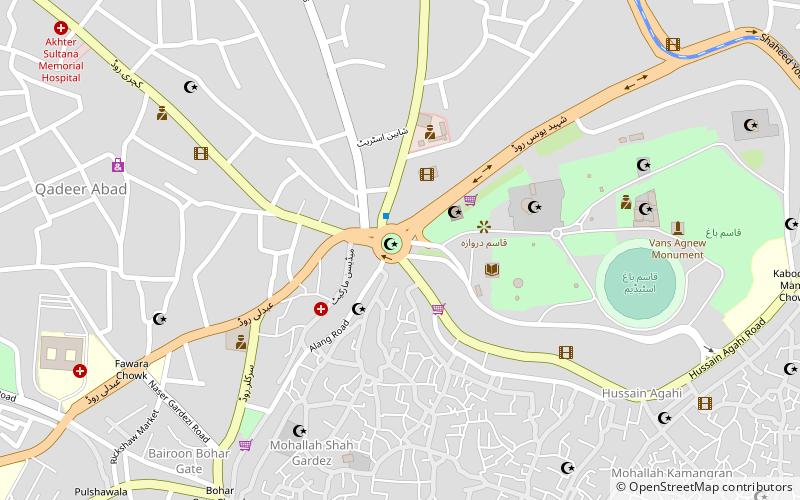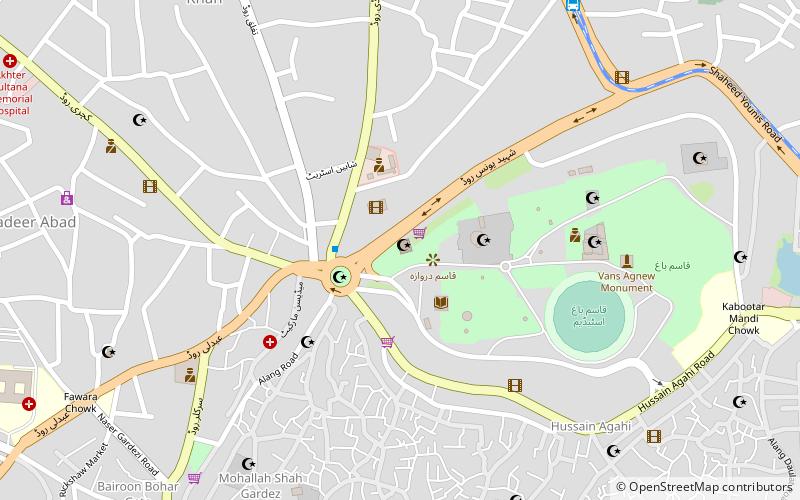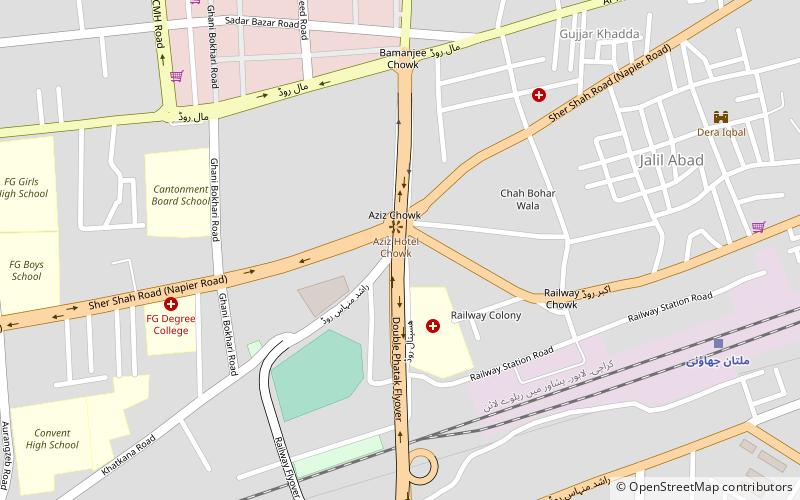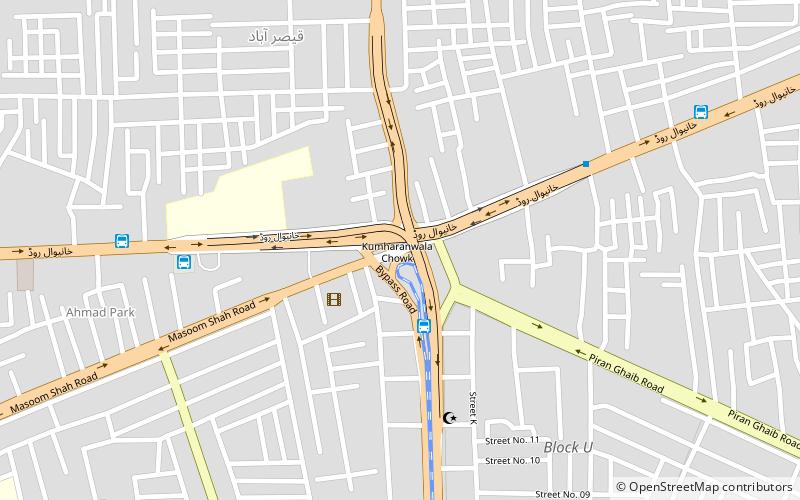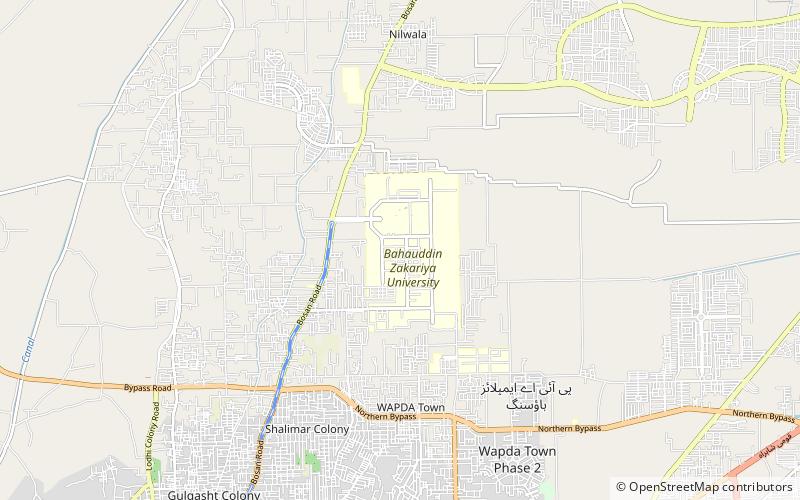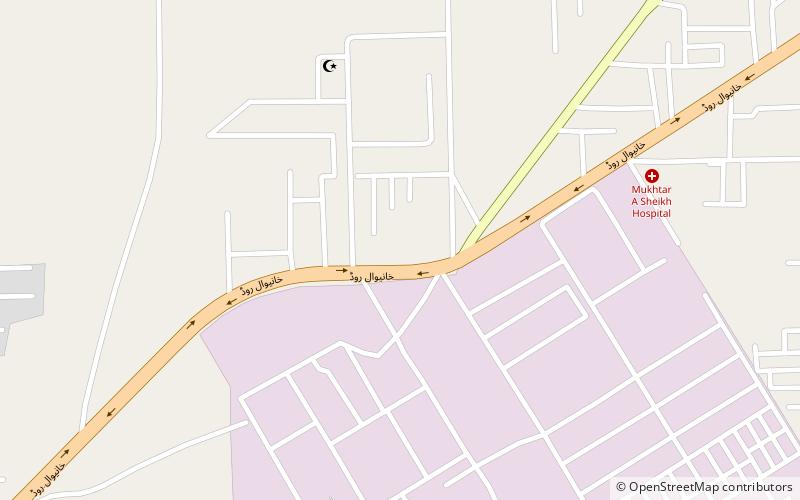Multan: Sightseeing
Places and attractions in the Sightseeing category
Cathedral of the Holy Redeemer
The Cathedral of the Holy Redeemer is the main church of the Roman Catholic Diocese of Multan, Pakistan. Father Shahzad Niamat was the cathedral parish priest, and Father Shakeel John the assistant in 2008.
Ghanta Ghar
Clock Tower Multan or Ghanta Ghar Multan is city government headquarters of Multan in the Punjab province of Pakistan.
Shahi Eid Gah Mosque
The Shahi Eid Gah Mosque is an early 18th-century mosque located in the Pakistani city of Multan, in southern Punjab.
Bloody Bastion
Bloody Bastion, also called Khooni Burj or Bloody Tower, is a bastion in the old City Wall of Multan, between Pak Gate and Delhi Gate on Alang Road in Multan. The tower is a remnant of the city's fortifications that were destroyed by the British in 1849.
Nishtar Medical College
Nishtar Medical University is a public sector health sciences university located in Multan, Punjab, Pakistan. It is one of the oldest medical institutions established after the creation of Pakistan.
Tomb of Shah Rukn-e-Alam
The Tomb of Shah Rukn-e-Alam located in Multan, Pakistan, is the mausoleum of the Sufi saint Sheikh Rukn-ud-Din Abul Fateh. The shrine is considered to be the earliest example of Tughluq architecture, and is one of the most impressive shrines in the Indian subcontinent.
Mausoleum of Shah Ali Akbar
The Mausoleum of Shah Ali Akbar is a mausoleum in Suraj Miani Multan, in Punjab province, Pakistan. Shah Ali Akbar is a descendant of Shah Shams Sabzwari and the grandson of Shah Shams. It is a mini version of Mausoleum of Shah Rukne Alam. It is octagonal in shape.
Shrine of Bahauddin Zakariya
The Shrine of Bahauddin Zakariya is a 13th-century shrine located in the city of Multan, in Pakistan's Punjab province. The tomb is dedicated to the Muslim mystic Bahauddin Zakariya, founder of the Suhrawardiyya order of Sufism.
Multan Fort
The Multan Fort, a military installation, was a landmark of South Asian defence and architecture. According to some estimates the original fort was built by Katoch Dynasty Rajput between 800 and 1000 B.C. However, it was later destroyed.
Ghanta Ghar Chowk
Ghanta Ghar Chowk is a place in Multan, the fifth-largest city in Pakistan, which literally means "Clock Tower Town Square" in Urdu. It is the largest intersection in Multan, near the clock tower of the city called Ghanta Ghar. The largest diameter of this circular intersection is 127 metres, while its minimum diameter is 94.5 metres.
Al-Muzaffar Mosque
The Al-Muzaffar Mosque is a mosque reconstructed in Multan by the former prime minister of Pakistan, Yusuf Raza Gillani in 2011. It was constructed by multan famous businessman Al haji khawaja muzaffar ud din sb near Multan Fort in 1955, near Ghanta Ghar.
Nishtar Chowk Flyover
Nishtar Chowk Flyover is located in Multan, city of Pakistan. It is a one way flyover constructed with Inner Ring Road Multan project. It is a one way flyover made to get easy access to Nishtar Hospital from LMQ Road. Construction was started in 2009 and completed in 2011...
Multan Arts Council
Multan Arts Council is located in Multan city of Pakistan. Founded under the statutory provisions of the Punjab Council of Arts Lahore in the year 1975 as its regional centre for the city of Multan. Its building is located on MDA Road, Multan. It has a hall, art gallery, stage...
Yousuf Raza Gillani Flyover
Yousuf Raza Gillani Flyover is located in Multan city of Pakistan. Ground breaking of this flyover was done by former prime minister of Pakistan Yousuf Raza Gillani on the new year ceremony on Saturday, 31 December 2011.
Climate of Multan
Multan is a city located in the southern part of Punjab, province in Pakistan. Multan features an arid climate with very hot summers and cold winters. The city witnesses some of the most extreme temperatures in the country. Dust storms are a common occurrence within the city. The closest major city is Bahawalpur.
Chowk Kumharanwala Level II Flyover
Chowk Kumharanwala Level II Flyover also called Jinnah Chowk Flyover is located in Multan city of Pakistan, at an intersection itself called as Chowk Kumharanwala, Jinnah Chowk or Qadaffi Chowk.
Bahauddin Zakariya University
Bahauddin Zakariya University is a public university with its main campus in Multan, Pakistan. Bahauddin Zakariya University was founded in 1975 as Multan University, and is one of the largest universities in Punjab. It was renamed in 1979 in honour of a Sufi saint Baha-ud-din Zakariya.
NFC Institute of Engineering and Technology
The NFC Institute of Engineering and Technology Multan is a public university located in Multan, Punjab, Pakistan.
Chah Nizam Walla
Chah Nizam Wala, also known as Thaheem Lane, is a small suburb located in Bosan, Multan District, Pakistan. Its founder was Malik Nizam Thaheem. It has an area of 360 kanals. The suburb's main ethnic group is Thaheem, a Muslim group of Arabic origin which is believed to have come to the Multan area in the 12th century.
Shah Rukan e Alam
Shah Rukn-e-Alam Colony is one of the autonomous towns of the city of Multan in the Punjab province of Pakistan. It was established in 1984 by Multan Development Authority.
Kumhar Mandi
Kumhar Mandi, is a neighbourhood in Multan, Punjab, Pakistan. It is located at the start of Shujabad Road while turning towards Chowk Nagshah from Chowk Double Phatak. It is the main market for Muslim Colony residentials. Majority of people here speak Seraiki and Punjabi as a native language.
Muhammad Nawaz Sharif University of Engineering & Technology
The Muhammad Nawaz Sharif University of Engineering and Technology is a public university located in Multan, Punjab, Pakistan. It was established in 2012 on the initiative of Chief Minister Punjab Mian Muhammad Shahbaz Sharif.
Muzaffarabad
Muzaffarabad is town near Multan on Muzaffargarh Multan road. It is famous for Colony Textile Mill, one of the largest textile mills of Pakistan. According to official and newspapers reports, 14 workers were killed in 1978 in Colony Textile Mill. Mussawat, newspaper, reported a total of 22 deaths.
Map

